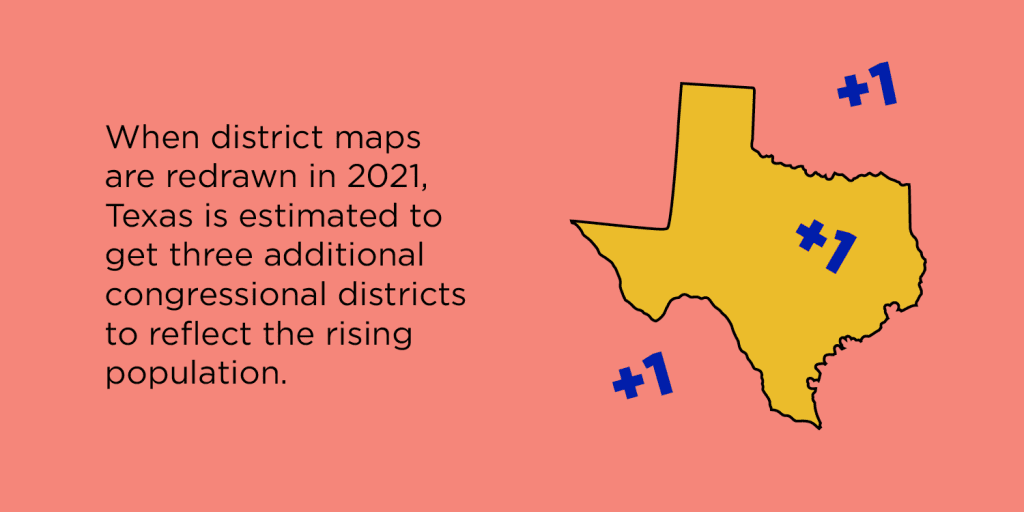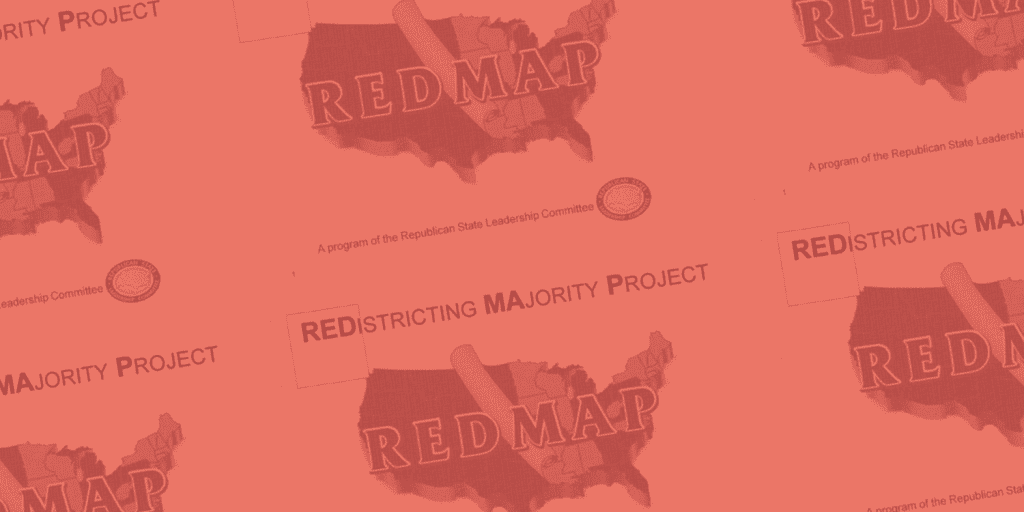Redistricting is one of the most important political challenges happening in the states. What’s at stake is nothing short of the future of our democracy and the next decade of political power. So, here’s everything you need to know about the most consequential event of 2021.
What is Redistricting
Redistricting happens every ten years when state legislatures or other institutions redraw districts for representatives to the U.S. House and members of each state’s legislature. This happens the year after the U.S. Census is completed — in this case, 2021.
However, because of the pandemic and interference by the Trump administration, it’s taking Census workers longer than usual to certify the count — meaning that updated population numbers will be delivered to the states much later than expected. Because of the Census delays, many states’ redistricting processes will be delayed too, because they can’t draw new maps that reflect current population figures until they receive the data.
Once the population statistics are finally delivered, the maps will then be redrawn to ensure that each district has an equal number of people. Texas is a great example: The state grew by four million people in the last ten years — so when district maps are redrawn in 2021, Texas is estimated to get three additional congressional districts to reflect the rising population.

New maps can be drawn in a lot of different ways to match the updated population counts, but there are a few norms followed: Each district is supposed to be contiguous, not reduce the voting power of people of color, and have an equal number of people — not just voters. But this is all in theory. In theory, redistricting is a straightforward, simple exercise that follows these rules and creates fairness in our representative system. But many of these maps have been drawn by malicious Republican-led state legislatures, so rules and fairness aren’t always respected.
Republicans have figured out a way to draw congressional and legislative maps that would elect as many GOP lawmakers as possible. It’s called gerrymandering. They end up creating zigzag nonsensical borders — cutting through neighborhoods and dividing towns — to assign themselves the most conservative voters possible. Some districts have been so ridiculously gerrymandered that people have actually turned them into a font and jigsaw puzzles to highlight their absurdity.
There are two ways to gerrymander. The first is packing: The GOP takes a heavily Democratic city and tries to pack the entire place into one or two districts where 80–90% of people vote blue. That leaves far fewer Democrats available to vote in the other districts, giving Republicans the advantage. The other way Republicans gerrymander is called cracking: They take a city, divide it, and extend the districts far out into the suburbs, exurbs, and even rural areas. That spreads out Democratic voters so that they can’t get a high enough vote share to win any election. Manipulating districts in this way sabotages the American promise of free and fair representation.
Republicans have figured out a way to ensure that even if Democrats win the popular vote, they won’t be able to win the majority of a legislative chamber. And in the last ten years, that’s exactly what we’ve seen in swing state after swing state.

The Story of 2011–2020
After winning big in 2010, Republicans had complete control of 25 state legislatures — and they abused their majorities to turn redistricting into one of the GOP’s greatest weapons. Since then, in-depth analysis of Republican gerrymandering showed that they were able to rig the maps to win an additional 27 U.S. House seats — unfairly sending more Republicans to Congress than voters actually wanted. The rigged maps had an even bigger impact in state legislative races.
In Michigan, Republicans drew districts that were ridiculously skewed in their favor. In all five elections since 2011 — including 2020 — Michigan House Democrats won the most votes statewide, but rigged maps gave Republicans the majority of seats. We also saw the devastating consequences of Republican gerrymandering in Wisconsin, where Republicans rigged the maps to make it practically impossible for Democrats to win. In the 2018 elections, Assembly Democrats won 53% of the vote but only won 36% of the seats.

Two more swing states also show how the GOP uses gerrymandering to corrupt maps. In 2016, 47% of North Carolinians voted for a Democratic state House representative, yet Democrats only won 23% of the seats. The same thing happened in Pennsylvania, where 48% of voters chose the Democratic candidate for state House, yet Democrats won only 27% of the seats.
Because these GOP-drawn maps don’t ensure equal representation or represent the will of the voters, the last decade has seen a number of expensive legal cases to stop racial and partisan gerrymandering. In all, there have been over 40 major court cases concerning congressional and legislative maps — many of those challenges were led by progressive allies looking to promote fair districts.
Democratic legal experts succeeded in getting maps thrown out in states like Michigan, Texas, North Carolina, and Virginia because they were purposefully rigged to diminish Democratic voting power. Virginia drew new maps, which were used for the first time in 2019 — when Democrats won control of both chambers for the first time in a generation. But many gerrymandered maps are still intact elsewhere, because the conservative U.S. Supreme Court ruled in Rucho v. Common Cause that partisan gerrymandering is constitutional. That means Democrats have to win on rigged maps in order to get fair ones. But we’ve made great progress in the last ten years.

Why Democrats Are Winning
After the GOP’s gerrymandering atrocities in 2011, Democrats and pro-democracy advocates set out to make sure Republicans couldn’t do the same thing again in 2021. Democrats invested heavily in state races to flip legislative chambers and governorships, and activists were able to establish independent redistricting commissions. Thanks to these efforts, Republicans have lost their redistricting power in over 50 congressional districts.
In New Mexico, Nevada, Maine, and Washington, Democrats have kicked Republicans out of their legislative majorities over the course of the past decade, allowing us to control the redistricting process. In Kansas, Wisconsin, Kentucky, Pennsylvania, and Louisiana, Democratic governors who flipped their seats blue will now have a major say in the new maps. And because Democrats broke GOP supermajorities in Pennsylvania, and blocked Republicans supermajorities in Louisiana and Wisconsin, those Democratic governors will be able to wield their veto power to ensure fair maps.
Nonpartisan commissions have also grown in popularity to push back against partisan GOP gerrymandering. The makeup of these commissions varies by state, but they all prohibit legislators or other public officials from manipulating redistricting under the table. That means in battleground states like Colorado, Michigan, and Virginia, these commissions will ensure fair maps for all — and protect districts from ever being gerrymandered by Republicans again.
With the rise of independent commissions and greater Democratic control in the states, Republicans will have substantially less influence over redistricting heading into this decade than they did the last, and voters in many states will be drawn into fair, non-gerrymandered districts for the first time in a generation. But the redistricting process isn’t over until the maps are finalized.
Maps will be drawn and legal action will be waged in 2021 — and Republicans are expected to play dirty. If Republicans control redistricting, the maps they draw are expected to be the worst, most gerrymandered monstrosities ever. But in states where Republicans lost control, they’re likely to bully nonpartisan commissions, sue to block fair maps, and even ask the Supreme Court to put a partisan thumb on the scale in their favor. Republicans are desperate to maintain control, so even though Democratic wins in the past decade have put us in a better position, the campaign to end Republican gerrymandering isn’t over.
To finally achieve fair maps, everyone needs to get involved in 2021. That starts by staying informed: Sign up to be on our Redistricting Alert List.


